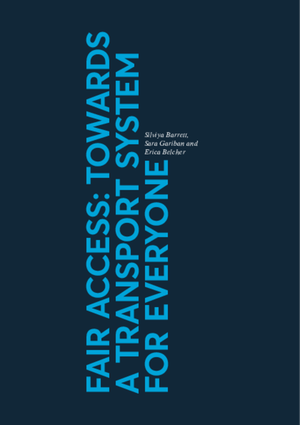Transport provision drives the social and economic life of the city, but the availability and impact of transport are not spread equally among citizens.
This report from Centre for London develops a new framework for considering the barriers to accessing public transport, as well as walking and cycling options, in London. It examines how both the availability of different modes of transport, and negative impacts such as air pollution and road danger, affect different groups, including low-income Londoners, young, older or disabled people and ethnic minorities.
- Londoners spend more of their income on transport than people outside the capital or in other world cities.
- Transport costs can be a barrier to many people across the city, in both inner and outer London.
- Disabled and older people and those with invisible conditions cannot access large parts of the public transport network.
- Lack of provision for walking and cycling can lead to sedentary lifestyles and affect health and wellbeing.
- Some groups are unfairly affected by the negative impacts of transport provision.
- Findings indicate how different user groups can face multiple and overlapping barriers to accessing public transport, walking and cycling.
To help address these challenges, the report recommends that equity should be a central consideration in all transport planning and investment decisions.
- When preparing business cases, the Mayor, Transport for London (TfL), boroughs, planners and developers should consider wider social benefits early on in the process alongside economic benefits. They should also prioritise inclusive design, affordable and active transport investment, and affordable housing development.
- The Mayor and TfL should review the fares freeze and concessionary fares, and should specifically consider gradually phasing out the 60+ London Oyster photocard and the additional nominee pass for new TfL employees.
- The Mayor and TfL should review the zone and fare structure to improve affordability – including reducing the difference in fares between zones, reducing the number of zones, or rezoning particular stations that are in low-affordability areas.
- The Mayor and TfL should create a multi-modal journey planning platform alongside a system of mobility credits. These would allow for tailored accessibility features, targeted discounts such as subsidised bike share, and more flexible services for disabled people.

04 December 2019